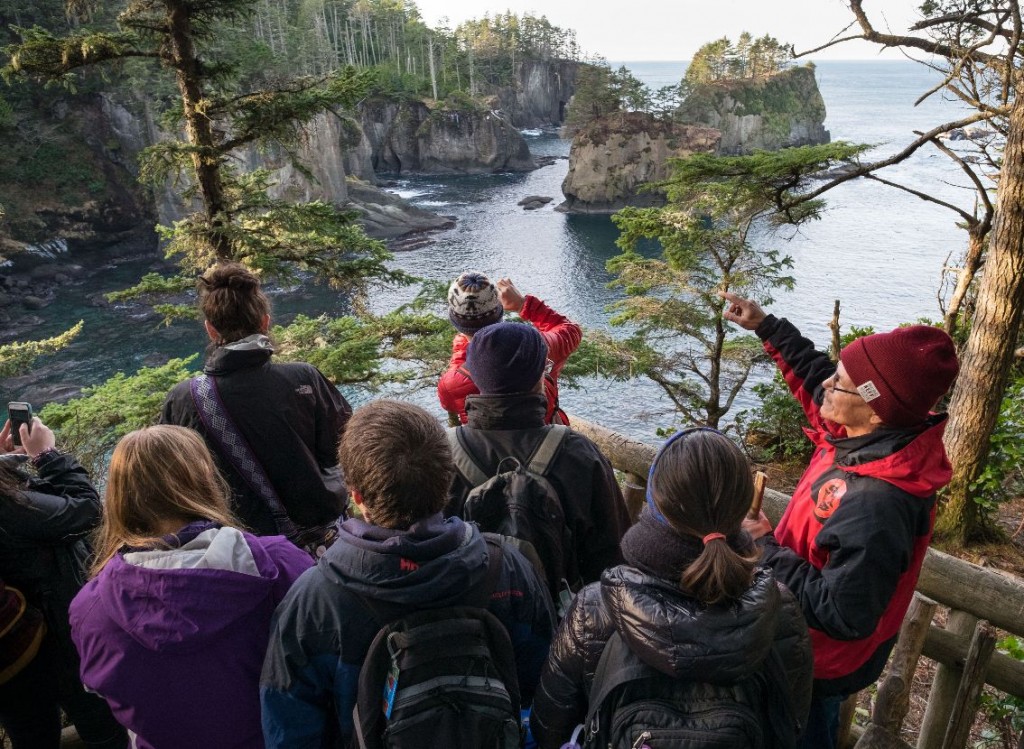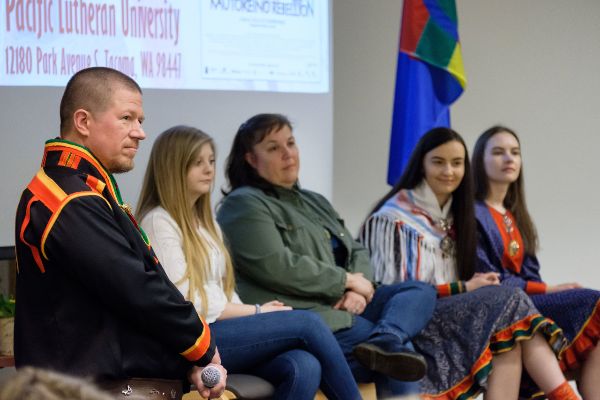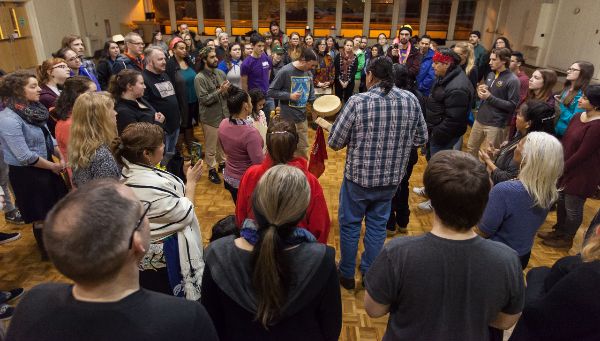Indigenous Learning
Mission:
Native American and Indigenous Studies is an interdisciplinary program grounded in a partnership between students, faculty, staff and local communities, with a global Indigenous focus centered in local and regional contexts. We empower students to recognize, honor and value Indigenous ways of knowing, so that they can work in collaboration with Indigenous communities and all their relations.
The Native American and Indigenous Studies minor combines NAIS courses with courses carefully selected from a variety of Humanities, Social Sciences and Interdisciplinary programs, and works in collaboration with local Indigenous communities and institutions to create a space for Indigenous academic knowledge and inquiry. Students work with each other and with members of Indigenous communities to develop understandings and relationships that can complement a variety of majors.

Learning Outcomes
Students earning a minor in Native American and Indigenous Studies will:
- Respectfully integrate Indigenous epistemologies and intellectual traditions into their analyses of larger systems, histories and communities;
- Explain the importance of community, relational responsibility and reciprocity in shaping their vocations;
- Achieve introductory fluency in Southern Lushootseed or another Indigenous language, and explain the relationship between language, culture and ways of knowing;
- Address their own relationship to place in ways informed by their understanding of Indigenous relationship to place;
- Articulate issues of Indigeneity, race, gender and social difference as issues of power and equity, and identify different Indigenous peoples’ strategies for addressing colonialism, racism, sexism and other systems of social oppression; and
- Draw connections between their academic work and personal vocation by reflecting on the importance of community, relational responsibility and reciprocity, what it means to live beautifully, harmoniously and ethically, to engage in work that is useful, and to conduct inquiry that holistically draws on the spiritual, intellectual, physical and social realms.
Foundational Values
“I try not to be ‘objective’ about anything. I fear those who are unemotional, and I solicit emotional response whenever I can. I do not stand silently by. I stand with you against the disorder” (Jeanette Armstrong, Okanagan Syilx) (1).
The NAIS Program was deliberately designed by Indigenous and allied faculty, staff and students with attention to the following guiding concepts:

Relational responsibility: We are all situated within networks of relationships, and we recognize that each of these relationships brings responsibilities with it. We are responsible to the places, people and other living things with which we have relationships. (Shawn Wilson, Opaskwayak Cree)(2)
Scholarship as community building: To conduct effective and responsible Indigenous scholarship, we need to build and strengthen a sense of community, not just with other Indigenous scholars, but also with Indigenous communities. And we need to remember our accountability to them. (Wilson)(3)
Dåajmijes vuekie: A South Sámi term that describes our understanding of the aesthetic, the practical and the ethical as connected. The beautiful object is useful and is made in an ethical way. The ethically made object is useful and beautiful. The useful object is made ethically and is beautiful. (Lena Kappfjell, Sámi)(4)
Dåajmijes voete: A related South Sámi term for our understanding that this is the way that we ought to behave—aesthetically, practically and ethically—and for our recognition that the only way we can do this is from a thoroughly informed and trained position. Behaving in this way is an obligation, and requires significant knowledge, so we should always listen and learn before we act. (Kappfjell)
Institutional racism arises when “a university’s standard pedagogical method is congruent with the culture of White students but not with the cultures of students of color” (James Josephe Scheurich and Michelle D. Young)(5)
Indigenous space: Creating an Indigenous space within the university means creating a space for Indigenous philosophies and intellectual traditions. It means opening the university to the possibility of other epistemes and ways of knowing. So Indigenous ways of knowing are a gift that can help the university better realize its mission. (Rauna Kuokkanen, Sámi)(6)

(1) Armstrong, Jeanette. “Sharing One Skin.” In In Zoltán Grossman and Alan Parker, eds. Asserting Native Resilience: Pacific Rim Nations Face the Climate Crisis. Corvallis: Oregon State Univ. Press, 2012. 37-40: 40.
(2) Wilson, Shawn. Research Is Ceremony: Indigenous Research Methods. Halifax: Fernwood, 2008. 80-96.
(3) Wilson: 86
(4) Kappfjell, Lena. “Tradition, Value, Habit.” Presentation given at University of Tromsø (Norway) 1 March 2012.
(5) Scheurich, James Joseph and Michelle D. Young. “White Racism among White Faculty: From Critical Understanding to Antiracist Activism.” In William A. Smith, Philip G. Altbach and Kofi Lomote, eds. The Racial Crisis in American Higher Education: Continuing Challenges for the Twenty-First Century. Albany: SUNY Press, 2002. 225.
(6) Kuokkanen, Rauna. Reshaping the University: Responsibility, Indigenous Epistemes, and the Logic of the Gift. Vancouver: UBC Press, 2007. 49; 128-155.


